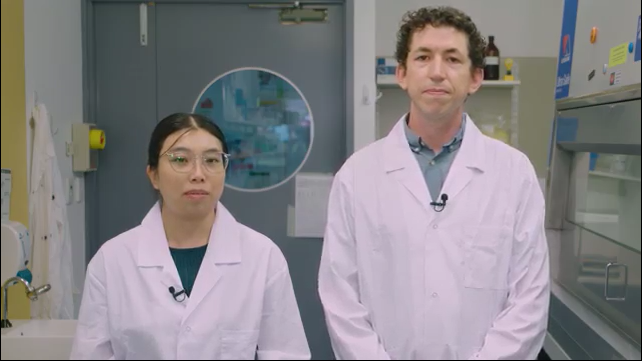
Collecting and submitting samples for veterinary testing
To assist us in efficiently processing your submission and minimise any potential delays in the processing of your samples, we have prepared instructional videos highlighting the essential requirements for submitting samples for veterinary testing.
Video 1 - Collecting, packaging and shipping samples
NSW DPI Laboratory Services provide a range of diagnostic testing for animal and plant diseases. Our ability to perform accurate diagnostic testing depends on receiving fresh, properly prepared specimens accompanied by a fully completed specimen advice form. Video 1 provides information on how to collect and package samples from a wide range of sources as well as highlighting how to complete a specimen advice form. This video is part of a four part series on collecting, packaging and shipping particular types of samples to NSW DPI Laboratry Services.
Video 2 - Collecting, packaging and shipping dangerous goods
Our labs conduct testing on samples that may contain pathogens that are considered hazardous to humans or animals. Referred to as Category A, these samples require additional labelling on the outer box to protect anyone who handles the samples during transit and on receipt at our lab. Video 2 provides information on how samples must packed using the triple packaging system. Information is also provided on how to label and ship dangerous goods. This video is part of a four part series on collecting, packaging and shipping particular types of samples to NSW DPI Laboratory Services.
Video 3 - Collecting and packaging footrot samples
One of the services provided is testing for footrot. Footrot is a contagious bacterial disease of sheep and goats. Footrot infection is classified as either benign or virulent at the flock level. Virulent footrot is a notifiable disease supported by a regulatory program in NSW which requires all private veterinarians to report suspicious cases to the Local Land Services or to our Veterinary Officers at NSW DPI. Video 3 provides information on how to collect, package and send samples from sheep and goats for footrot testing. NSW DPI Laboratory Services would like to acknowledge footage taken at the University of Sydney for this video. This video is part of a four part series on collecting, packaging and shipping particular types of samples to NSW DPI Laboratory Services.
Video 4 - Collecting, packaging and shipping samples of fixed tissues (including TSE)
NSW DPI Laboratory Services uses histopathology for disease investigation which requires samples to be collected and submitted in a specific way to ensure proper processing. Video 4 also provides specific information on collecting and submitting brain samples under the TSE program. This video is part of a four part series on collecting, packaging and shipping particular types of samples to NSW DPI Laboratory Services.
Necropsy and sample collection
A thorough necropsy and appropriate sample collection is essential for the diagnosis of important diseases in livestock. This instructional video contains information on personal protective equipment, necropsy technique including brain examination for sheep, and sample collection, storage and handling. The video was funded by the National Significant Disease Investigation Program, with assistance from Local Land Services, NSW Department of Primary Industries and the veterinary pathology laboratory at Elizabeth Macarthur Agricultural Institute. Warning: this video shows a necropsy being undertaken.


